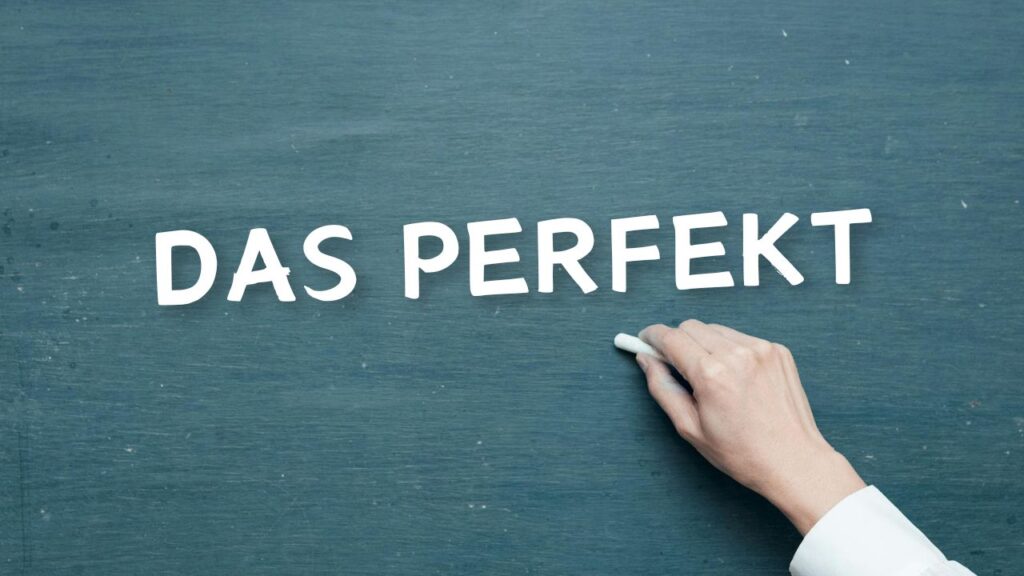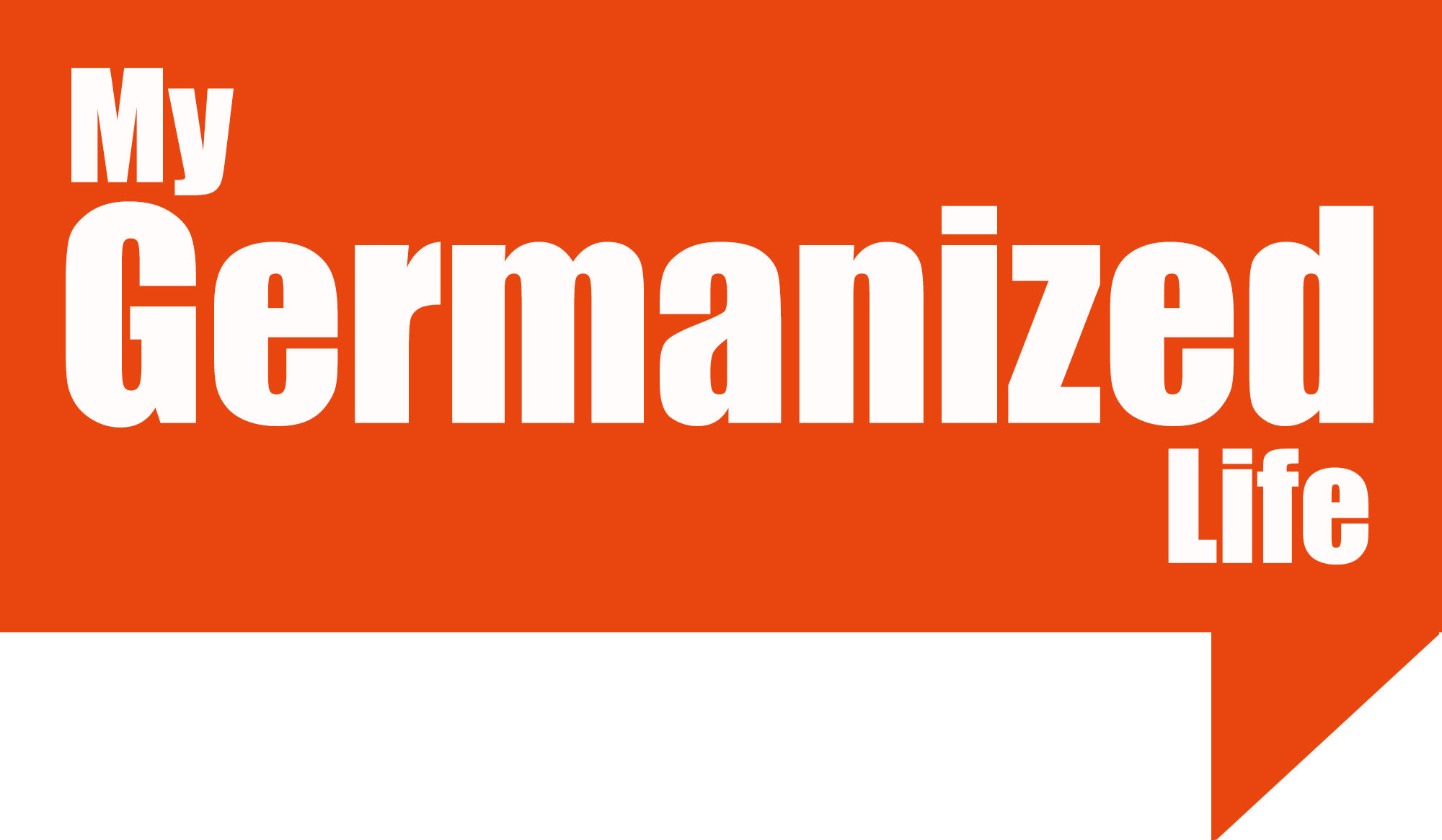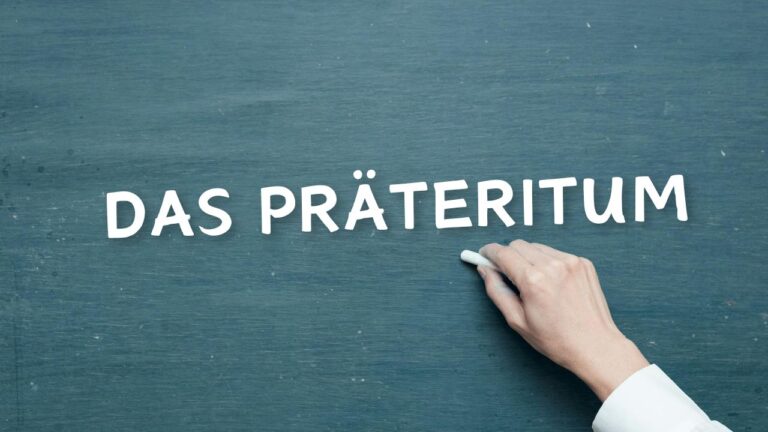The German present perfect tense (Perfekt) is one of the most common past tenses in German, especially in spoken language. While it may seem tricky at first, mastering this tense is essential for everyday conversations.

Table of Contents
- What is the German Present Perfect Tense?
- Structure of the German Present Perfect Tense
- Choosing Between Haben and Sein
- How to Form the Past Participle
- German Present Perfect Word Order in Sentences
- Common Mistakes to Avoid in the German Present Perfect
- Ready for German Present Perfect Practice Exercises?
- Practice Makes Perfekt!
What is the German Present Perfect Tense?
The Perfekt tense in German describes past events that are either completed or have relevance to the present. Unlike English, where the present perfect often emphasizes the result of an action, in German, it frequently replaces the simple past (Präteritum) in spoken language.
Example:
- Ich habe gegessen. → I have eaten. / I ate.
Structure of the German Present Perfect Tense
The German Perfekt tense consists of two parts:
- An auxiliary verb (haben or sein) in the present tense.
- The past participle (Partizip II) of the main verb.
Formula: haben/sein + past participle
Example:
- Ich habe das Buch gelesen. → I read the book.
- Er ist nach Hause gegangen. → He went home.
Choosing Between Haben and Sein
Most verbs use haben as the auxiliary verb. However, some verbs require sein. Here’s how to decide:
When to Use “haben”
- Transitive verbs (verbs that take a direct object):
- Ich habe den Film gesehen. (I saw the movie.)
- Reflexive verbs:
- Ich habe mich gewaschen. (I washed myself.)
- Modal verbs (when combined with another verb):
- Ich habe arbeiten müssen. (I had to work.)
- Note: Modal verbs often use a double infinitive form in the Perfekt.
When to Use “sein”
- Verbs indicating movement from one place to another:
- Er ist nach Berlin gefahren. (He traveled to Berlin.)
- Verbs indicating a change of state:
- Sie ist eingeschlafen. (She fell asleep.)
- A few exceptions (like sein, bleiben, and werden):
- Ich bin geblieben. (I stayed.)
How to Form the Past Participle
The past participle (Partizip II) depends on the verb type: regular, irregular, or mixed.
Regular Verbs (Weak Verbs)
For most regular German verbs:
- Add ge- at the beginning.
- Add -t at the end.
Formula: ge + verb stem + t
Examples:
- spielen → gespielt (played)
- machen → gemacht (made)
Irregular Verbs (Strong Verbs)
Irregular German verbs often change their stem vowel and end with -en.
Examples:
- sehen → gesehen (seen)
- gehen → gegangen (gone)
Mixed Verbs
Mixed verbs combine features of regular and irregular verbs. They change their stem vowel and use the -t ending.
Examples:
- bringen → gebracht (brought)
- denken → gedacht (thought)
Verbs with Prefixes
- Inseparable prefixes (be-, emp-, ent-, er-, ge-, miss-, ver-, zer-):
- Do not add ge-.
- bekommen → bekommen (received)
- Separable prefixes:
- Insert ge- between the prefix and the verb stem.
- aufstehen → aufgestanden (got up)
German Present Perfect Word Order in Sentences
In main clauses, the auxiliary verb stays in the second position, and the past participle goes to the end.
Example:
- Wir haben das Auto repariert. (We repaired the car.)
In subordinate clauses, the auxiliary verb moves to the end.
Example:
- Ich weiß, dass er das Auto repariert hat. (I know that he repaired the car.)
Common Mistakes to Avoid in the German Present Perfect
Avoid these common mistakes when forming the present perfect tense in German.
1 Using the wrong auxiliary verb:
- Incorrect: Ich bin gegessen.
- Correct: Ich habe gegessen.
2 Forgetting to move the past participle to the end:
- Incorrect: Ich habe gegessen das Brot.
- Correct: Ich habe das Brot gegessen.
3 Misforming the past participle:
- Incorrect: gespielen
- Correct: gespielt
Ready for German Present Perfect Practice Exercises?
Reference a chart for German irregular verbs as you learn and practice.
Practice Makes Perfekt!
The German present perfect tense (Perfekt) is essential for daily conversations. Remember the key formula: haben/sein + past participle. With practice, you’ll naturally choose the right auxiliary verb and form correct past participles.
Tip: Listen to native speakers and notice how often they use Perfekt in conversations. Practice forming sentences about your day to get comfortable using it!




